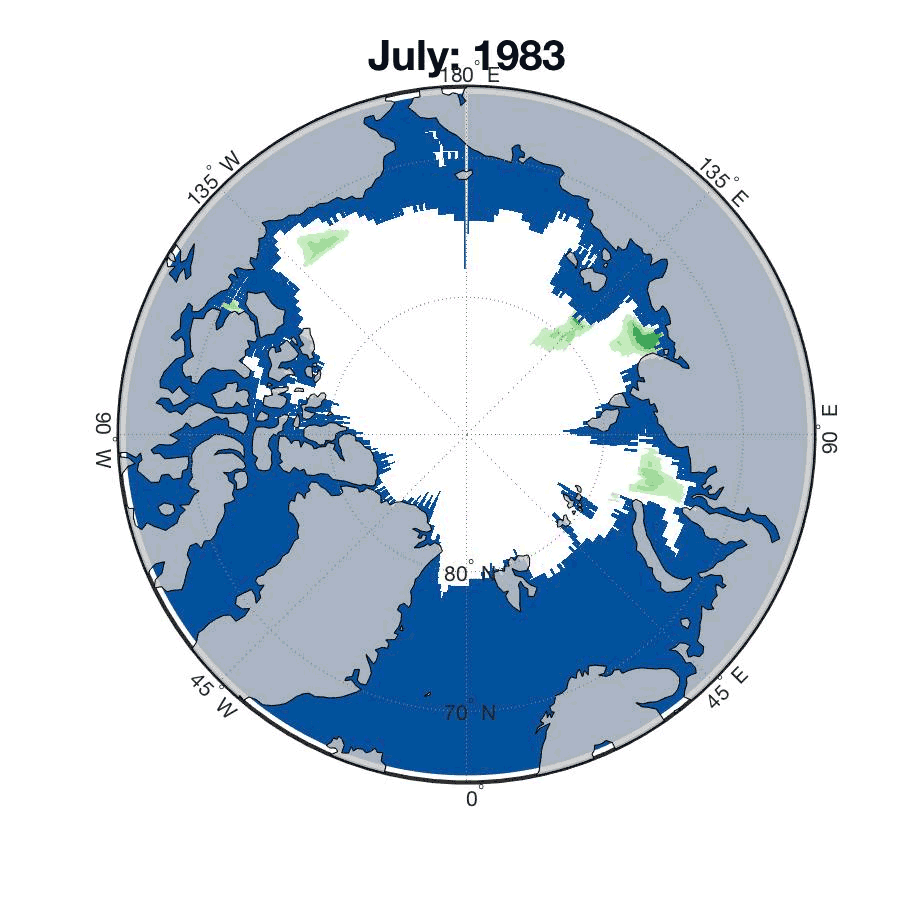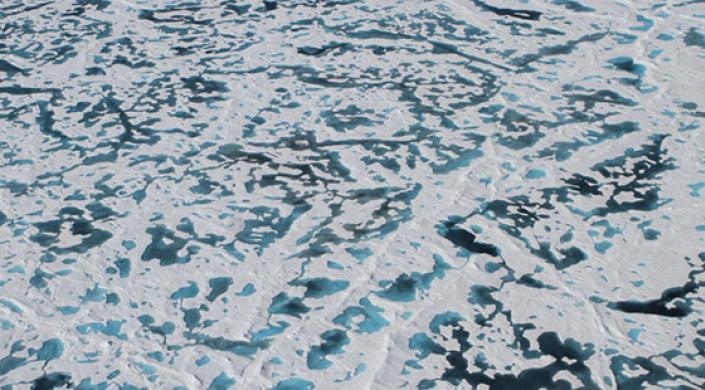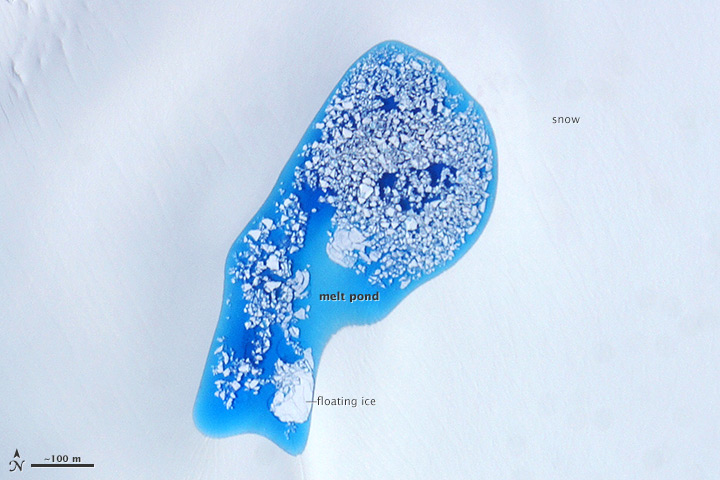Melt ponds darken the surface of thinning Arctic sea ice, creating conditions friendly to algae blooms under the ice.
(Image courtesy of NASA)
In 2011, researchers observed something that should be impossible — a massive bloom of phytoplankton growing under Arctic sea ice in conditions that should have been far too dark for anything requiring photosynthesis to survive.
So, how was this bloom possible?
Using mathematical modeling, researchers from the Harvard John A. Paulson School of Engineering and Applied Sciences (SEAS) found that thinning Arctic sea ice may be responsible for frequent and extensive phytoplankton blooms, potentially causing significant disruption in the Arctic food chain.
The research is described in Science Advances and is a collaboration between researchers from SEAS, University of Oxford and University of Reading.
Arctic Melt Pond
NASA (August 2014)
Phytoplankton underpins the entire Arctic food web.
Every summer, when the sea ice retreats, sunlight hitting the open water triggers a massive bloom of plankton.
These plumes attract fish, which attract larger predators and provides food for indigenous communities living in the Arctic.
Phytoplankton shouldn’t be able to grow under the ice because ice reflects most sunlight light back into space, blocking it from reaching the water below.
Spatial map of the average number of days of sufficient light for sub-ice phytoplankton blooms over time.
(A to C ) Shading indicates the number of days in May,
from 1986 to 1995 (A), 1996 to 2005 (B), and 2006 to 2015 (C), where a sub-ice bloom is permitted. (D to F) Same as (A) to (C) but for June.

The green shows the area of sea ice where plankton is able to grow (Christopher Horvat)
But over the past decades, Arctic ice has gotten darker and thinner
due to warming temperatures, allowing more and more sunlight to
penetrate to the water beneath.(A to C ) Shading indicates the number of days in May,
from 1986 to 1995 (A), 1996 to 2005 (B), and 2006 to 2015 (C), where a sub-ice bloom is permitted. (D to F) Same as (A) to (C) but for June.
(G to I) Same as (A) to (C) but for July.
Redboxes in (D) to (F) indicate the region of the 2011 cruise.
Baffin Bay and regions with an ice concentration less than 80% at every point during each time period are colored blue.
Continents are colored gray.
Continents are colored gray.

The green shows the area of sea ice where plankton is able to grow (Christopher Horvat)
Large, dark pools of water on the surface of the ice, known as melt ponds, have increased, lowering the reflectivity of the ice.
The ice that remains frozen is thin and getting thinner.
“Our big question was, how much sunlight gets transmitted through the sea ice, both as a function of thickness, which has been decreasing, and the melt pond percentage, which has been increasing,” said Chris Horvat, first author of the paper and graduate student in applied mathematics at SEAS.
“What we found was that we went from a state where there wasn’t any potential for plankton blooms to massive regions of the Arctic being susceptible to these types of growth.”
Scientists have made a biological discovery in Arctic Ocean waters as dramatic and unexpected as finding a rainforest in the middle of a desert.
A NASA-sponsored expedition punched through three-foot thick sea ice to find waters richer in microscopic marine plants, essential to all sea life, than any other ocean region on Earth.
The discovery is the result of an oceanographic expedition called ICESCAPE, or Impacts of Climate on EcoSystems and Chemistry of the Arctic Pacific Environment.
The discovery is the result of an oceanographic expedition called ICESCAPE, or Impacts of Climate on EcoSystems and Chemistry of the Arctic Pacific Environment.
The NASA-sponsored mission explored the seas along Alaska's western and northern coasts onboard a U.S. Coast Guard icebreaker during the summers of 2010 and 2011.
The finding reveals a new consequence of the Arctic's warming climate and provides an important clue to understanding the impacts of a changing climate and environment on the Arctic Ocean and its ecology.
Twenty years ago, only about 3 to 4 percent of Arctic sea ice was thin enough to allow large colonies of plankton to bloom underneath.
Today, the researchers found that nearly 30 percent of the ice-covered Arctic Ocean permits sub-ice blooms in summer months.
“The meter decline in sea ice thickness in the Arctic in the past 30 years has dramatically changed the ecology in that area,” said Horvat.
“All of a sudden, our entire idea about how this ecosystem works is different. The foundation of the Arctic food web is now growing at a different time and in places that are less accessible to animals that need oxygen.”
Links :
- Cosmos : Phytoplankton greens the Arctic oceans
- ScienceAlert : The Arctic is turning green at an alarming rate, and scientists finally know why
- The Independant : Arctic turns green as sea ice melts to record low levels



No comments:
Post a Comment